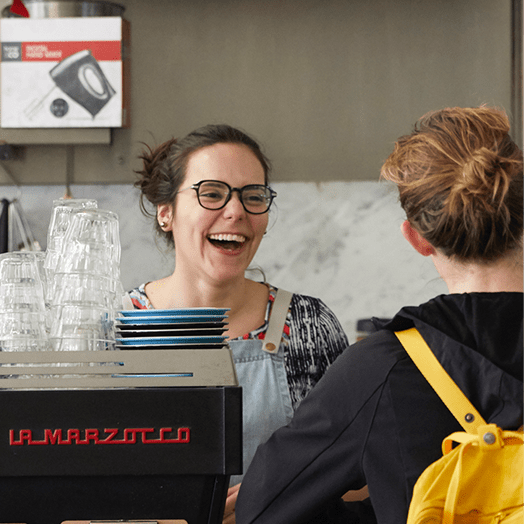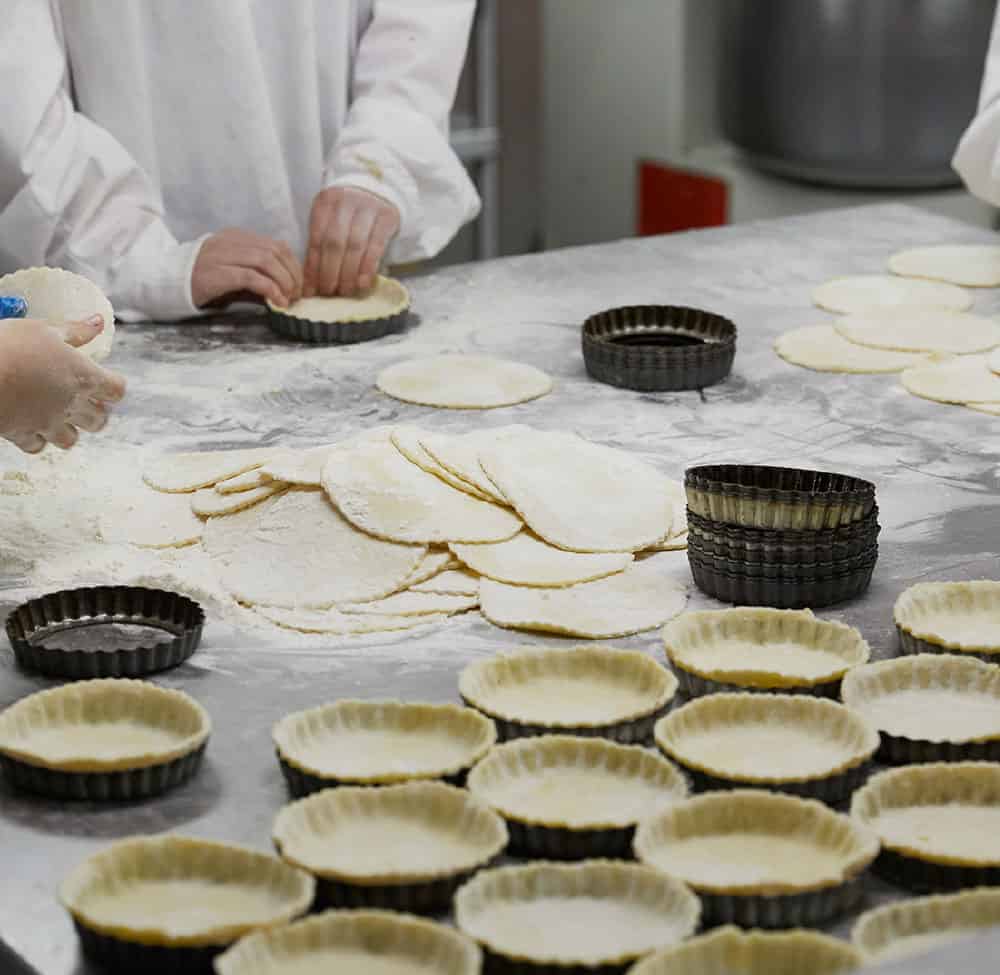
Opening and growing a restaurant can be exhilarating and is filled with endless possibilities and challenges. However, there are so many moving parts and variables and it can be hard to find enough time to consider them all. Often as a business owner, you might go off your gut when analysing your restaurant performance and make decisions based on what you see is happening at a surface level.
Going off of your gut feel is useful to a point, but you’ll reach a time when the numbers tell a different story, and you’ll never know until you start looking at your data. Data gives you real, quantitative information from your business to make informed decisions; decisions that will keep your customers happy and help you make money to expand your food business.
Looking for ways to improve restaurant performance?
Here are 10 questions you can ask yourself that you should probably know the answers to. If you don’t know the answer, fear not, we’ll also show you how a good POS reporting stack can help show you the data you need to grow.
- 1. What were your three best-selling products this week?
- 2. Who on your team had the highest average transaction value this week?
- 3. How do your best selling dishes perform throughout the day and week?
- 4. Do you know how much more you need to prep on a weekend day vs a week day?
- 5. Which products declined the most in sales this past week?
- 6. Who are your best customers and what do they order?
- 7. Do you know when you need extra staff, and what time is best to send them home?
- 8. Which product makes you the most profit?
- 9. Do you know your average spend per table per hour?
- 10. Do you know which of your dishes performed the worst last month?
What were your three best-selling products this week?
Chances are, as a business owner or manager looking to increase restaurant performance, you’re all over the sales numbers for your business. You know what your daily/weekly/monthly sales are and you even know which days of the week are better than others.
But do you know what products got you those numbers? Have you drilled down enough to figure out what products your customers are really loving?
In a social-media-driven world that’s all about likes and engagement, it’s often the most popular, best-selling products that get the most attention, and bring the most foot traffic in the doors. It’s important that what your customers are loving is reflected in what you’re promoting and you’re using every opportunity to capitalise on this popularity.
It can be tricky to determine this on gut feel alone, so you need to use your business reports to dig deeper into what’s performing and why. Maybe the demand for a popular product has started to fall, perhaps because of seasonality or consumer trends. Or maybe the product was never as popular as you thought it was in the first place.
To start looking at top products, you’ll want a POS that has reporting functionality built in, so you don’t have to pull the numbers yourself every week. It’s usually a quick dashboard you can reference each day with real time (or close to it) figures.
Who on your team had the highest average transaction value this past month?
High average transaction value (ATV) is the gold star when its comes to determining peak staff performance. It recognises team members who improve restaurant sales by raking in the biggest orders in the same amount of time, compared to their counterparts.
For example, let’s say you pull a report and we can see that Laura and Ivan have the two highest ATV of all staff members last week.
Good on them. But what do you do with this info?
Let’s break it down. If your restaurant can increase its ATV by even $0.50, it means big bucks for your bottom line. That being the case, it’s smart to focus on finding ways to raise ATV across the board.
There are lots of ways you can get creative with this. For example, you could have Laura and Ivan run a training workshop with the team to share the top tricks they’ve learned to boost ATV. Or you could start a staff incentive program where each person who raises their ATV over a certain amount each week gets a prize.
The ROI opportunity for this is huge. Say your business’ ATV is $5.50 and has 5,000 orders in a week. Increasing ATV by $0.50 means $2,500 in extra revenue every week! And if you’re prize is a $20 steak for the winner, this math is a no-brainer.
But what about a restaurant or another vertical with higher ATV? The math would be a bit different, but say your ATV is $20, with weekly orders a touch more reserved at 1,200 per week. Increasing ATV by just $1.89 (the same percentage increase as the example above) means $2,160 in extra profit each week!
The ultimate lesson here? Find great staff. Track what they do. Ask them why. Share with the team. Repeat.

How do your best-selling dishes perform throughout the day and week?
Product sales can vary (sometimes wildly) day to day and hour to hour, but do you know if there are patterns to these variances? Lightspeed Insights can do this legwork for you.
Let’s say you’re looking a your product sales report and can see that sales of your chicken burger peak at 2:00pm in the afternoon with another peak in the evening, at 8:00pm. We can also see that total sales on Fridays, Saturdays and Sundays are nearly double that of regular weekday total sales.
Ok, now let’s apply this to a restaurant dish with ten ingredients. An operator could use this data to plan stock and staffing by only ordering and prepping what is absolutely needed to meet the demand of lunch and dinner rushes.
This keeps food-waste and cost of goods low, which yields healthier margins and fatter profits. Yum!
To make sure your business always has the stock it needs (no more and no less), you need to know what your inventory looks like at a glance. Lightspeed Purchase gives you one simple way to order and logs your POs centrally on the system, so you have everything in one place.
This single source of truth means your team will always know when and what to order, who to order it from, and what to receive, no matter who’s on the roster that day, so you can make sure you always have what you need for your best-selling dishes on hand.
Do you know how much more you need to prep on a weekend day vs a week day?
This question is related to the one above. However, in this case, instead of highlighting wastage, it highlights missed revenue opportunities.
Let’s say we’re looking a last months sales report and can see that Monday, Tuesday, and Wednesday are similar, however, Saturdays have nearly twice the volumes. If a restaurant doesn’t have accurate data to show how much more of a product they sell on the weekend vs a regular weekday, they may be missing an opportunity to make more money, because they’re under-prepared for the Saturday surge.
Which products declined the most in sales this past week?
It’s natural for products to decline each week, but what we’re looking for is a decline that equates to a sizeable chunk of change. For example, you’re looking at your sales dashboard and can see that despite the percentage decline being roughly similar to the other products, your carbonara total sales lost is 4X greater than the next closest product.
So what should this business do?
They need to drill into the data. If the declines are consistent, maybe it can be attributed to seasonality, maybe the product has run its course, or maybe prices were raised the week before, which has led to a sharp decline.
Drilling into your restaurant performance with Insights data will allow you to see what’s going on and take steps to rectify.
Who are your best customers and what do they order?
If it ain’t broke don’t fix it, right? Well, not always.
Just because something’s worked for you in the past, doesn’t mean it will work forever. That’s why we need data to help us figure out when it’s time to pivot and what to pivot to in order to improve restaurant performance. For instance, a restaurant may think that regulars are returning for their famous t-bone, but realise, after analysing the data from a year of doing business, the customers who come back the most frequently are actually those who stay for a short time and have a relatively low ATV – in other words, they’re coming in for a beer and a bite, not a shiraz and a sirloin.
That’s why it’s so valuable to enter individual customer data into your POS. Having this knowledge allows the business to shift their strategy and make sure there are ample options for those looking to pop in for a few drinks and snacks to start (or end) their night, rather than sit for a luxurious three-hour dinner.
Similarly, as a restaurant, you might find that your best customers all come back and order the same product over and over. You could then make sure that product is always available, and heavily promote it to entice others to try it and to keep regulars happy.

Do you know when you need extra staff and what time is best to send them home?
At roughly 30% of total operating costs, labour can leave a massive dent in a hospitality business’ bank account, which means businesses need to staff smart.
These staffing decisions are important. You probably already know you need to stagger your rosters to keep labour costs down. But do you know the exact times you need extra people on hand and when you should start sending people home?
For example, let’s say a business has three staff working each service period and can find a way to save three labour hours for every service period. Assuming two service periods a day, that’s six labour hours saved or 42 hours a week or the cost of one employee. If you’re paying $18 an hour, that’s the equivalent of nearly $40K in your pocket every year!
Being able to use your business data to track when your peak and off-peak days and times are (based on the number of customers and how much they spend) means you can plan ahead and make sure you’ve got enough staff when you need them and you’re operating leanly when you know it will be quiet.
Which product makes you the most profit?
It’s no surprise that businesses love products that sell well. But if your top-performing products have terrible margins and don’t actually make you a profit, what’s the point?
Healthy margins vary, but are usually in the 20-25% range or less. A crummy margin above 30% may indicate one of a few things:
- the product is underpriced, and prices should be raised;
- the business is paying too much for ingredients and might have gone too premium (do you really need that 10-year-old vintage organic cheese?); or
- more food is being prepped than is needed and wastage is high.
Using your data to keep track not just of how much money you make or how much of a product you sell, but of how profitable the product is to you, allows you to make smart decisions around your menu that will ultimately result in more money in your pocket.

Do you know your average spend per table per hour?
Ok, so we’ll admit, this isn’t something that most POS reporting will give you. It’s not even something you’ll want to strictly monitor as it can vary throughout the day.
But… it is a good number for your team to have in the back of their heads.
Why?
If a table of guests is staying longer than your average table, whoever is attending to this table has to make a decision. It’s really an easy decision if you have an average spend per table per hour benchmark.
If the table is sort of meandering, not really ordering much and just staying past your average dine-in guest length, and they are below your benchmark number, then they should probably be handed the bill if the venue is busy.
If this table is well above the benchmark however, then your staff might choose to allow them to stay and continue to ask if the table would like anything else.
Of course, if your venue is not so busy or closing, then all bets are off.
Do you know which of your dishes performed the worst last month?
Every centimetre on a menu is prime real estate and should be maximised for full profit potential, but if certain dishes aren’t performing, you need to consider why.
Are they hidden in a menu dead zone? Is the description not selling the dream enough? Do your staff not know how to explain the dish? Or do people just not want to order it? These are all questions you need to ask when analysing your trade, and you won’t find this simply by looking at numbers.
If a dish just isn’t resonating with diners, then it needs to be tweaked or pulled from the menu. Making it over and over again, for no one, is a waste of food, money, and time.
Use data to improve your restaurant performance
Figuring out how to grow your restaurant business doesn’t have to be a mystery. If you’d like to know more about how Lightspeed Insights can help shed some light where it’s needed, get in touch and we’ll help you work out the reports that will be most beneficial for your business.

News you care about. Tips you can use.
Everything your business needs to grow, delivered straight to your inbox.



